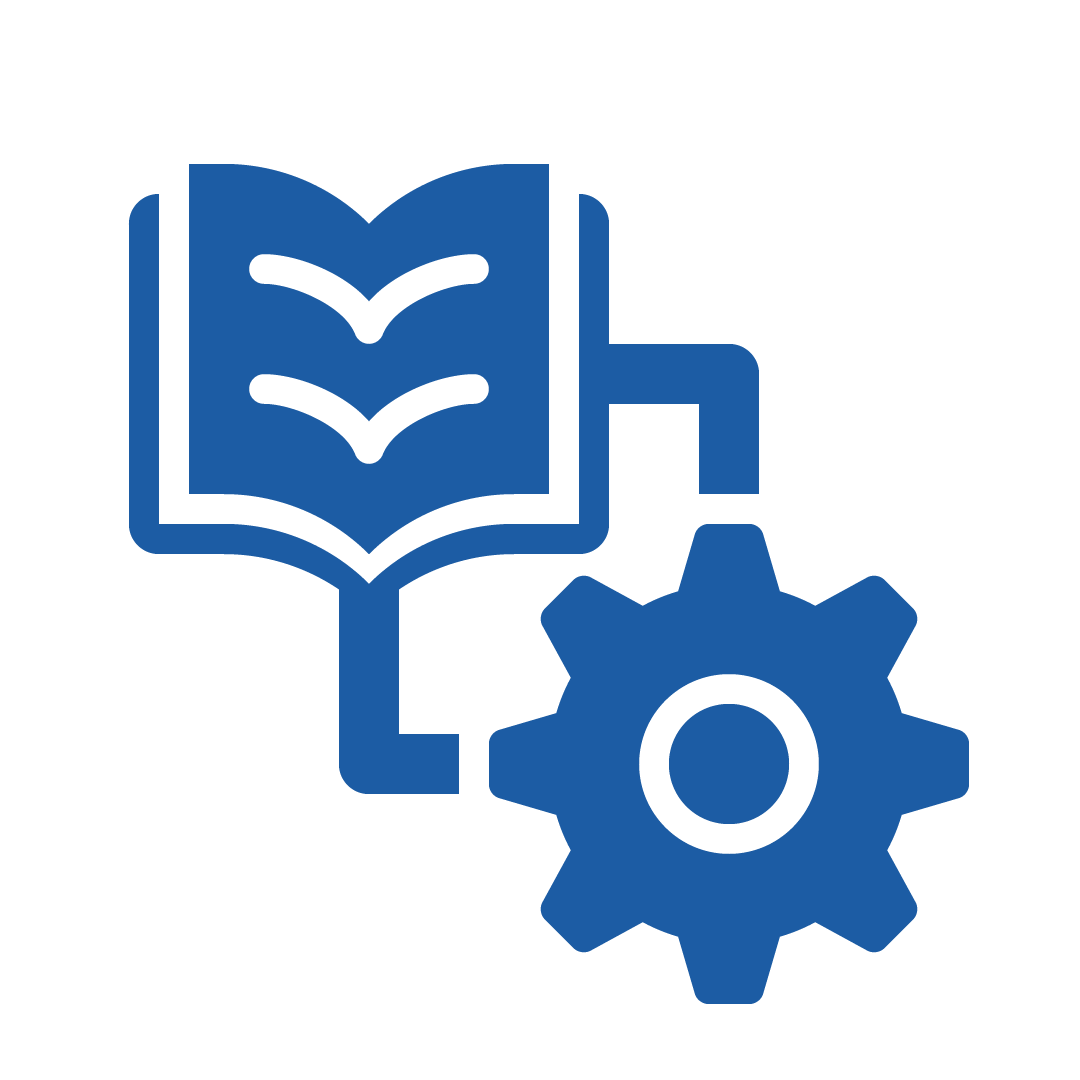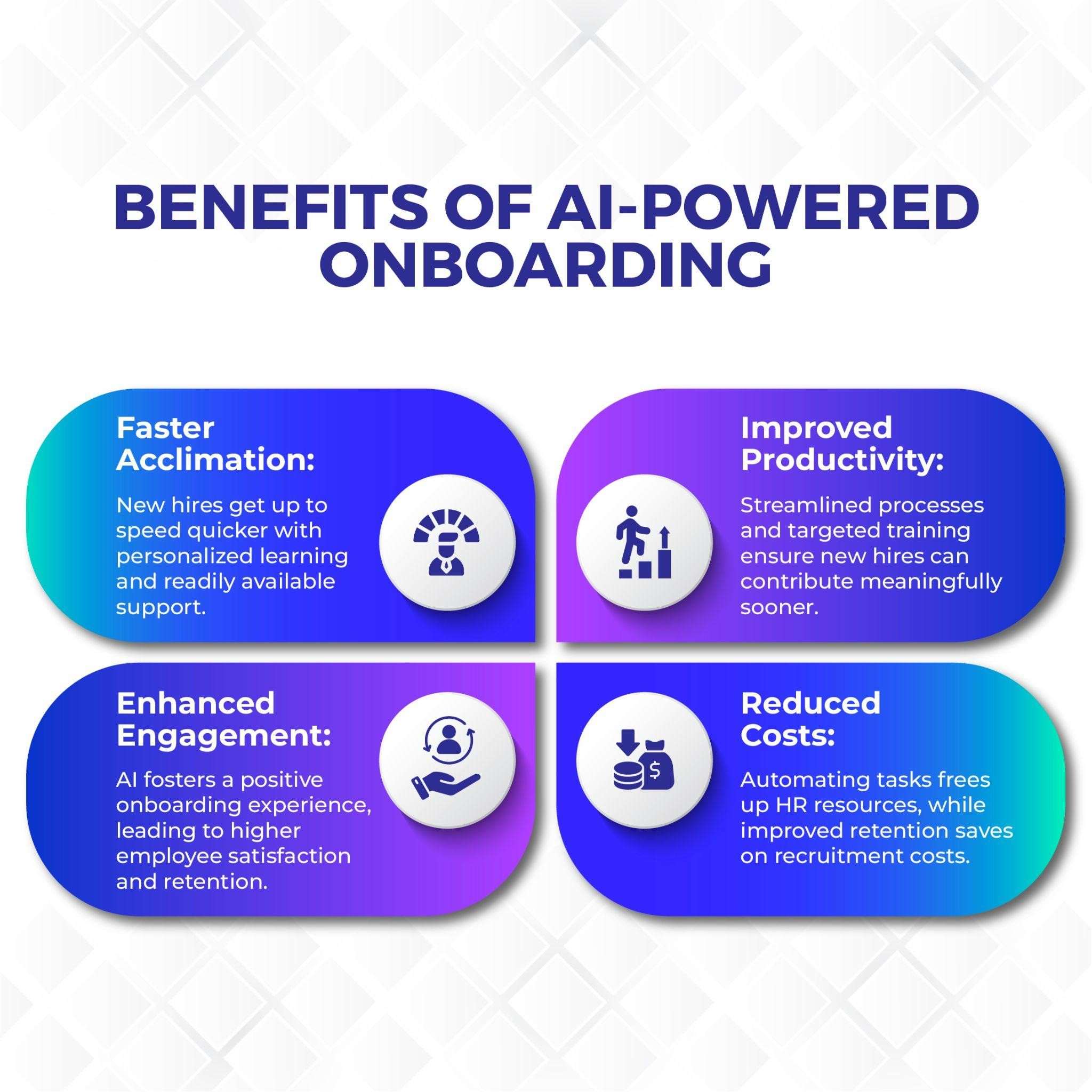
Employee onboarding is very crucial for any organization. The first few weeks at a new company set the stage for long-term employee success and engagement. Traditionally, it has been a manual and time-consuming task for HR departments, leading to inefficiencies and delays. It was often filled with paperwork and generic training, which can leave new hires feeling overwhelmed and unsure. However, with advancements in AI, organizations can revolutionize their onboarding processes, making them smoother and more effective for both new hires and the organization as a whole. AI offers powerful tools to transform the onboarding experience, making it more efficient, personalized, and engaging.
In this blog post, we will explore how AI technologies enhance employee onboarding, streamlining the experience and maximizing its effectiveness.
How AI Streamlines Onboarding
AI can revolutionize onboarding in several ways:

Automating Administrative Tasks:
AI can handle repetitive tasks like creating employee profiles, generating welcome emails, and managing access to systems and resources. This frees up HR professionals to focus on more strategic aspects of onboarding, like mentorship and personalized support.

Personalized Learning Paths:
AI can analyze new hires' skills, experience, and role requirements to create customized learning journeys. This ensures they receive the most relevant information and complete training most effectively.

Chatbots and Virtual Assistants:
AI-powered chatbots and virtual assistants can answer new hires' questions 24/7, providing instant support and guidance as they navigate the organization.

Predictive Analytics :
AI can analyze onboarding data to identify potential roadblocks for new hires. This allows HR to proactively address issues and ensure a smooth transition.

Engagement and Feedback Mechanisms:
AI can personalize onboarding communications, sending targeted messages and reminders to keep new hires engaged. Sentiment analysis can identify potential frustrations, allowing for early intervention and course correction.
Read here: Personalized Learning Paths With AI: Breaking Free From The One-Size-Fits-All Mold

The Human Touch: How to Strike the Right Balance
In navigating the onboarding process, it's crucial to maintain the essential element of human interaction alongside the advancements of AI. Here's how to achieve the right equilibrium:
Relationship Building: While AI can streamline processes, nurturing genuine connections with new hires is paramount. HR professionals and managers should actively engage to cultivate a sense of belonging.
Personalized Mentoring: AI can suggest suitable mentors, but the mentoring relationship itself must be tailored and human-centric, acknowledging individual needs and aspirations.
Feedback and Support: Utilize AI for data analysis, but prioritize regular check-ins for meaningful feedback and guidance, ensuring new hires feel supported and empowered in their roles.
Emotional Intelligence: Provide emotional intelligence training for managers and HR professionals to better decode non-verbal cues and offer empathetic support during onboarding. While AI offers data insights, addressing new hires' emotional needs necessitates human empathy.
Cultural Integration: Integrate new hires into company culture through human interaction, transmitting intangible elements like values and traditions. Encouraging interactions with existing employees and immersive cultural experiences fosters belonging and alignment with the organization's ethos, enhancing onboarding success.
The Future of Onboarding with AI
AI is still evolving, and its role in onboarding will continue to develop. Here are some exciting possibilities:
VR/AR Integration: Virtual Reality (VR) and Augmented Reality (AR) can create immersive onboarding experiences, allowing new hires to virtually explore the workplace and practice tasks. These technologies enable interactive training modules that engage employees in hands-on learning experiences.
AI-powered Performance Management: Through AI, performance management systems can analyze vast amounts of data to identify patterns and trends, offering personalized recommendations for skill development and goal achievement. Moreover, AI-driven performance evaluations can ensure objectivity and fairness in assessing new hires' progress and potential.
Gamified Onboarding Experiences: Incorporating gamification elements into the onboarding process can increase engagement and motivation among new hires. AI can analyze gameplay data to personalize challenges and rewards based on individual learning styles and preferences.
Continuous Onboarding Support: AI-powered chatbots and virtual assistants can provide 24/7 support to new hires, offering guidance and answering questions even after the initial onboarding period. This continuous support fosters a sense of belonging and ensures employees have access to resources whenever they need them.
Diversity and Inclusion Integration: AI can assist in creating more inclusive onboarding experiences by identifying biases in training materials and providing suggestions for improvement. Additionally, AI-powered tools can help match new hires with mentors or support networks based on shared backgrounds or interests, promoting diversity and inclusion within the organization.
Conclusion
By embracing AI, organizations can transform onboarding into a positive and productive experience for new hires. A well-designed AI-powered onboarding program can significantly improve employee acclimation, boost productivity, and lay the foundation for long-term success. As AI technology matures, we can expect even more innovative solutions that will further revolutionize the way we welcome and integrate new talent into the workforce.
Also read: Leveraging AI For Skill Assessment And Gap Analysis
